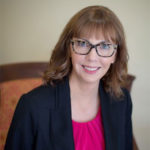By Kimberly K. Friedman, OD, FAAO

Nov. 4, 2020
Dry eye treatment is a growing patient need with the elderly population increasing, the added stress placed on our eyes by use of electronic devices, the effect on the eyes of many prescription medications and the comorbidity of dry eye with systemic conditions like autoimmune diseases. Here are essential actions and planning I undertook to start a thriving dry eye niche in my practice.
I Began with a Concept & Created a Marketing Strategy Around It
During my downtime recovering from Legionnaires’ Disease in 2016, I drafted plans for The Dry Eye Center at Moorestown Eye. I generated a logo, letterhead, template letters and patient care protocols, which I update as the science of dry eye evolves, worked on patient flow protocols (which I also update as needed) and read everything I could about dry eye and practice management.
I have had an interest in dry eye since I was diagnosed with Sjogrens Syndrome over 10 years ago. I took every continuing education course in my area on dry eye and nutrition and read everything I could. Any OD has the ability to dive into any sub-specialty within our profession. You just need the passion, intent and the follow-through.
You Already Have What You Need to Begin. Now Decide How to Go Deeper.
You have everything you need to treat dry eye: Your ears, your brain and a slit lamp. Probably in that order. If you want to dive deeper, there are many options. I have TearLab, InflammaDry, LipiScan and LipiFlow technology in my office. We bought those instruments outright. I would consider myself as having a mid-tier dry eye practice, meaning we have advanced technology to treat patients, but there are other practices with still more advanced instrumentation.
My full investment, between physical changes to our office and equipment was probably about $50,000.
The first year of our dry eye center launch, we had an 11 percent increase in income overall, directly related to the dry eye clinic; the second year increase in overall income was 8 percent and the third year it was 10 percent. Growth in income from our dry eye center this year remains to be seen with the full financial impact of COVID still unknown. The management of dry eye does not require a tremendous cost of goods, so the additional office visits and procedure visits, with minimal associated expenses, assist in delivering a healthy net income for the practice.
Weekly Training Sessions for Support Staff
When I started the clinic in my practice, I held weekly training sessions with my staff. These sessions started as online video calls while I was still recovering from Legionnaires’ Disease. I wanted to make sure my staff understood the patient education they would need to impart about our new services, and how they would handle scheduling of patients and other changes to our patient flow. I also wanted them to understand the basics of dry eye disease, so they would have an appreciation for the big picture of what we aimed to do for our patients.
Other Articles to Explore
There is a lot of optional testing one may wish to implement in a dry eye practice. The staff has to not only be proficient in administering and explaining the tests, but also in reinforcing the patient treatment protocol and being an optimistic “health coach” to answer questions and encourage compliance.
Patient Education is Everything In Launching Expanded Dry Eye Care
Our office has never done paid advertising of any kind. Our growth has been tied entirely to word-of-mouth friend and family referrals and current patients opting for additional services. The dry eye patients are already sitting in your reception area. You just have to listen and ask the right questions.
When I started our dry eye clinic, only about 20 percent of the patients came in knowing what dry eye was. But as we have gotten better at educating our patients, and as more pharmaceutical companies are doing direct-to-consumer advertising, about half of our patients come in asking for a dry eye examination and half are referred from another colleague in my office or a local MD’s office.
Your Best Source of Referrals May Be a Surprise
My most frequent referral source is a local rheumatologist–my rheumatologist, actually. We got to talking about dry eye and Sicca Syndrome, and he started sending his autoimmune patients with dry eye symptoms to me.
More Advanced Pharmaceuticals to Treat Dry Eye Are Coming
There are so many pharmaceuticals in the dry eye pipeline. That’s what I am most excited to see. But, of course, with any new pharmaceutical there is always the issue with insurance coverage and cost. It is crucial to have a fantastic technician who is well versed in prior authorizations and navigating the world of insurance requirements. In my office, we have one staff member who is our prior authorization guru. This ensures efficient processing of patient insurance, and an expert in this area, who is always ready and able to answer questions about which parts of a patient’s dry eye treatment their insurance will cover.
A Chance to Provide Better Patient Care & Enliven Your Career
If you want to build any type of sub-specialty in your practice, including a dry eye center, DO IT! It will enhance patient care, reignite your passion for optometry and increase your practice profitability.
 Kimberly K. Friedman, OD, FAAO, is the owner of Moorestown Eye Associates in Moorestown, N.J. To contact her: kkfod@comcast.net
Kimberly K. Friedman, OD, FAAO, is the owner of Moorestown Eye Associates in Moorestown, N.J. To contact her: kkfod@comcast.net

























